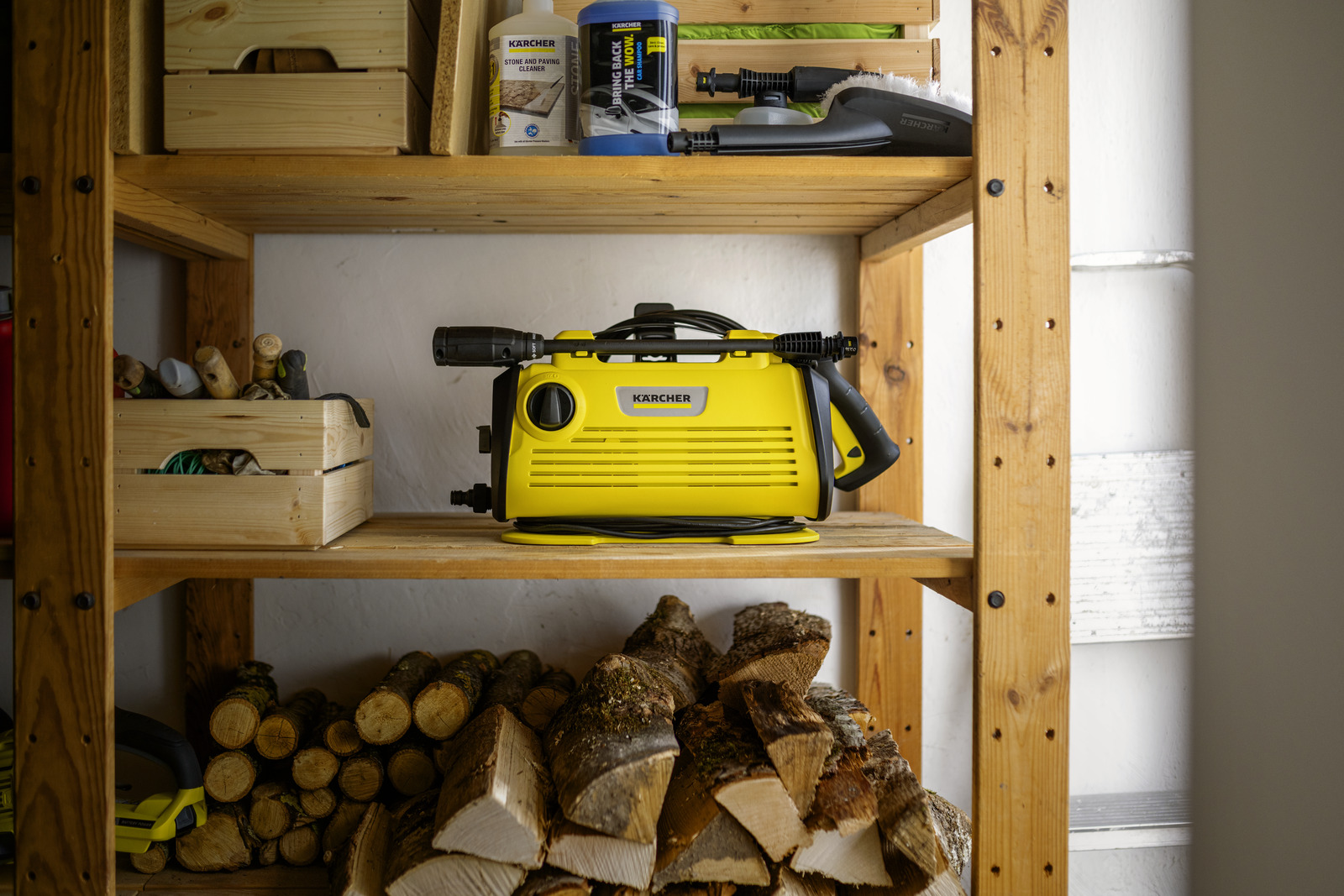
If you’ve invested in a pressure washer, whether gas or electric, taking care of it properly doesn’t end after the cleaning job. 💧 The way you store your machine can directly affect its lifespan, performance, and safety. Improper storage can lead to costly repairs — or even render your unit useless.
Let’s break down exactly how to store a pressure washer the right way — whether for short-term use between jobs or for long-term storage during winter. 🛠️📆
🔧 Why Proper Storage Matters
Pressure washers are made to handle rugged outdoor jobs, but their internal components are sensitive to water, temperature, and fuel degradation. Without proper storage, you risk:
- 🥶 Freezing and cracking water lines or pumps
- 🦠 Mold and mildew growth inside hoses or nozzles
- ⛽ Stale fuel gumming up engines (for gas models)
- 🪫 Battery drain or corrosion (for electric models)
- 🔧 Seal and gasket wear from pressure buildup or residue
By following a few easy steps, you’ll extend the life of your machine and avoid frustrating malfunctions.
🛠️ Short-Term Storage (Between Uses)
If you’re planning to use your washer again soon — say, within a few days or weeks — here’s what you need to do:
✅ 1. Turn Off and Disconnect
- Shut off the engine (or unplug electric models)
- Disconnect the water supply hose and pressure hose
- Squeeze the trigger on the wand to release any remaining pressure
✅ 2. Drain Excess Water
- Run the machine for a few seconds (without a water supply) to expel remaining water from the pump and hoses
- Disconnect and drain the spray wand, gun, and nozzles
✅ 3. Rinse the Detergent Tank
If you used detergent, rinse out the soap tank or siphon hose to prevent residue buildup.
✅ 4. Store Indoors or in a Sheltered Area
- Keep the machine in a dry, covered space, away from direct sunlight or rain
- Coil and hang the hose properly to prevent kinks
🧽 Pro tip: Keep the nozzles in a labeled container or onboard compartment to avoid losing them!
❄️ Long-Term Storage (Winter or 30+ Days of Inactivity)
Pressure washers need a little more attention if they’re going to sit unused for more than a month — especially in freezing climates.
🔹 For All Pressure Washers:
- Drain all water from the pump, hoses, and attachments
- Use pump saver or antifreeze solution to protect internal components from cracking
- Store in a climate-controlled or freeze-safe environment if possible
🔹 For Gas-Powered Models:
- Add fuel stabilizer to the tank and run the engine for a few minutes to circulate it
- Alternatively, drain the fuel completely if you prefer a dry tank method
- Change the engine oil and clean the air filter
- Remove the spark plug, add a few drops of oil into the cylinder, and pull the cord once to coat the inside
- Clean the cooling fins and check for clogs in the exhaust or carburetor
🛢️ Never store a gas washer with old fuel — it turns into varnish and clogs small engine parts. This is one of the most common causes of hard starts in spring.
🔹 For Electric Models:
- Disconnect and dry all cords
- Store the power cord neatly without sharp bends
- Check for signs of wear or fraying, and avoid letting the unit sit in damp areas
Browse Amazon Here For Popular Pressure Washers And Accessories
📦 Where Should You Store It?
The best location for pressure washer storage is:
- 🏠 A garage, shed, or basement (climate controlled)
- 📦 On a shelf or platform to keep it off concrete
- 🌬️ In an upright position with proper airflow around it
Avoid storing it:
- Outdoors under a tarp (moisture and condensation can still damage it)
- In an uninsulated shed during freezing months
- Near chemicals, fertilizers, or insect bait, which can corrode metal parts over time
🧼 How to Prep for the Next Use
When you’re ready to power up again, do a quick checklist:
- ✅ Inspect hoses and connections for cracks
- ✅ Check oil and fuel levels (for gas models)
- ✅ Reconnect accessories and prime the pump
- ✅ Test spray on a safe surface before jumping into cleaning
Taking 5 minutes to prep your machine ensures it performs at full power and avoids costly surprises. ⚙️💨
📌 Final Thoughts
Proper pressure washer storage isn’t complicated, but it’s essential. Whether you’re tucking it away for a few days or putting it down for winter, follow these simple guidelines to:
- 💧 Prevent internal damage
- 🔧 Avoid unnecessary repairs
- ⏳ Extend the life of your equipment
- 🧽 Keep your washer ready for action
Your pressure washer works hard for you — take good care of it, and it’ll return the favor for years to come! 🔧🧼✅
Browse Amazon Here For Popular Pressure Washers And Accessories






